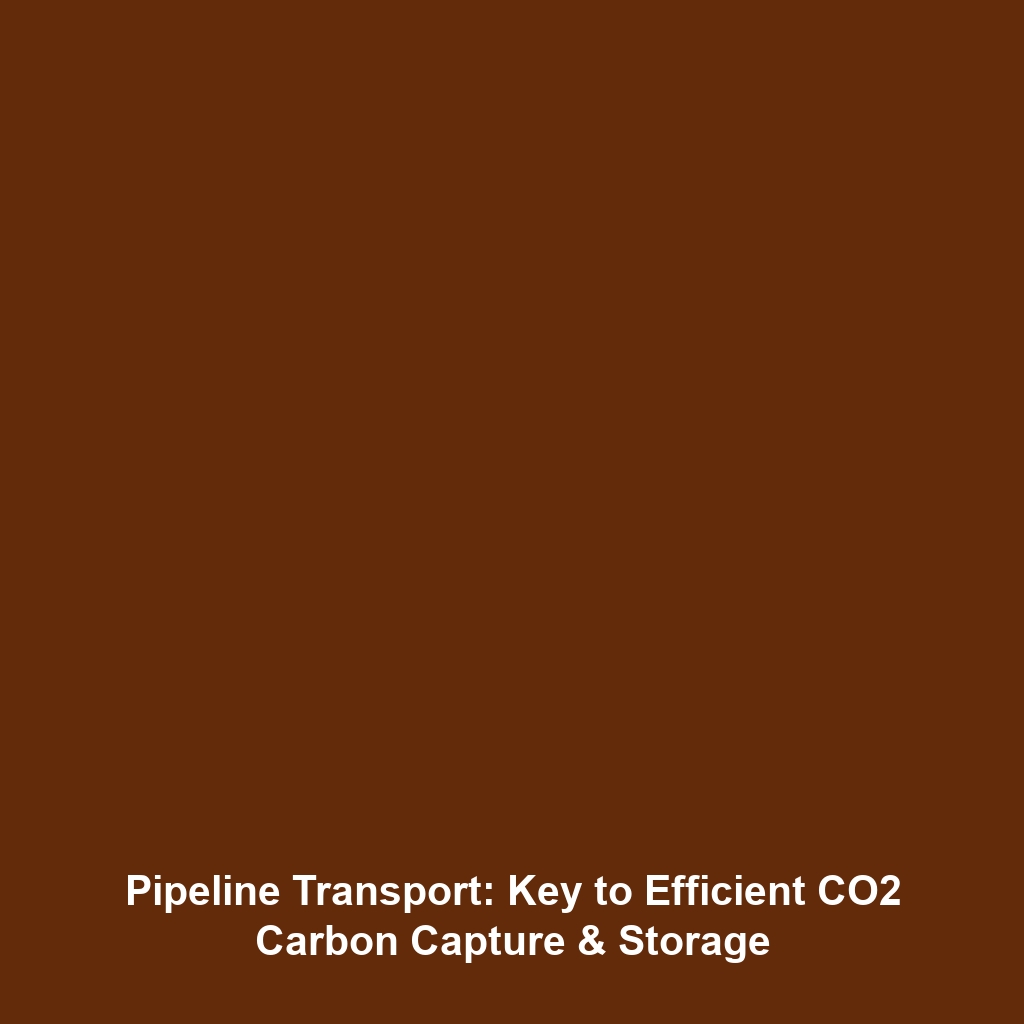Pipeline Transport: The Primary Method of Transporting CO2
Pipeline transport has emerged as the dominant method for transporting carbon dioxide (CO2), playing a pivotal role in the broader framework of Carbon Capture & Storage (CCS). As industries strive to mitigate their carbon emissions, understanding how pipeline transport facilitates the safe and efficient movement of captured CO2 is crucial. This article delves into the significance of pipeline transport in CCS, its key concepts, practical applications, and future research directions.
Key Concepts of Pipeline Transport
Pipeline transport involves the movement of CO2 from the point of capture to storage sites, ensuring that emissions are effectively reduced in line with environmental regulations and climate goals. Several key concepts underpin this method:
- Compression: Before CO2 is transported, it is compressed to increase its density, allowing for efficient transport.
- Pipeline Infrastructure: Robust pipelines made from carbon steel or polymer materials are designed to withstand high-pressure conditions while minimizing leaks.
- Monitoring Systems: Advanced technologies are used to track CO2 flow and detect any leaks, ensuring environmental safety.
These core principles make pipeline transport a fundamental component of the CCS paradigm, showcasing its effectiveness in reducing atmospheric CO2 levels.
Applications and Real-World Uses
Pipeline transport is utilized globally in several significant real-world applications related to Carbon Capture & Storage (CCS). Here are prominent examples:
- Enhanced Oil Recovery (EOR): CO2 is injected into depleted oil fields to improve extraction rates while simultaneously storing greenhouse gases.
- Industrial Emissions Management: Industries such as cement, steel, and chemical production use pipeline transport to relocate captured CO2 to storage facilities.
- Transport Networks: Extensive network systems facilitate the regional transportation of CO2 to designated geological formations.
These applications highlight how pipeline transport is instrumental in reducing emissions and enhancing energy production efficiency.
Current Challenges
While pipeline transport presents numerous benefits, several challenges and limitations must be addressed:
- Infrastructure Costs: The high capital costs associated with constructing and maintaining pipeline systems can be a barrier to widespread adoption.
- Regulatory Hurdles: Compliance with environmental regulations and securing permits can delay project initiation.
- Public Acceptance: There are concerns regarding the safety of CO2 transport and potential environmental impacts, making community engagement essential.
Addressing these challenges is crucial for the successful implementation of CO2 pipeline transport solutions.
Future Research and Innovations
Future research efforts are focused on enhancing the efficiency and safety of pipeline transport for CO2. Innovative advancements include:
- Next-Gen Materials: Research into lighter and stronger materials could reduce construction costs and improve pipeline integrity.
- Smart Monitoring Systems: Implementation of AI and IoT technologies for real-time monitoring could enhance leak detection and operational efficiency.
- Integrated Systems: Developing integrated approaches that combine pipeline transport with capturing technologies can streamline processes and reduce emissions further.
These innovations are expected to transform the field and bolster the effectiveness of Carbon Capture & Storage initiatives.
Conclusion
The significance of pipeline transport as the primary method of transporting CO2 cannot be overstated within the context of Carbon Capture & Storage (CCS). By understanding the key concepts, applications, and challenges associated with this method, stakeholders can make informed decisions that drive environmental progress. Continued research and innovation will be vital for overcoming existing barriers and enhancing pipeline transport efficiency. For more information on Carbon Capture & Storage and related technologies, visit our other articles on climate solutions and energy efficiency.


